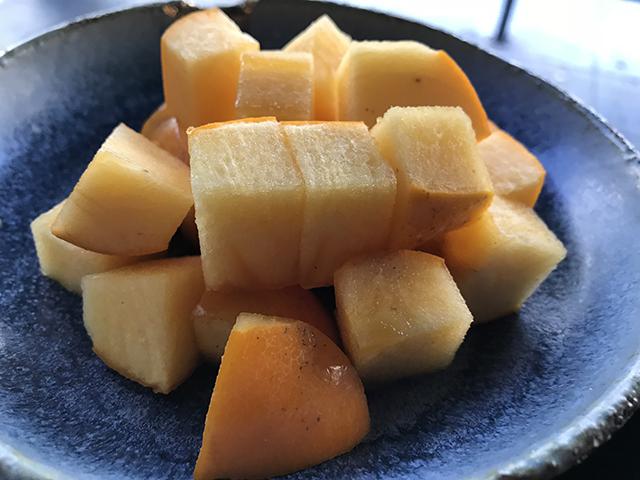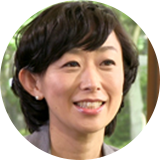On a bright sunny October day in downtown Los Angeles, I attended a tasting event put together by the Japan External Trade Organization (JETRO) and about 30 chefs and influencers. We had a chance to bite into delicious persimmons imported from Wakayama Prefecture. Wakayama, located in the western part of Japan and known for its mild climate and hilly lands, is the top producer of persimmons in Japan. Persimmons grow on trees, like plums, and are abundant in tannin, a type of polyphenol which reduces cholesterol. They also contain a good amount of vitamin A and C.
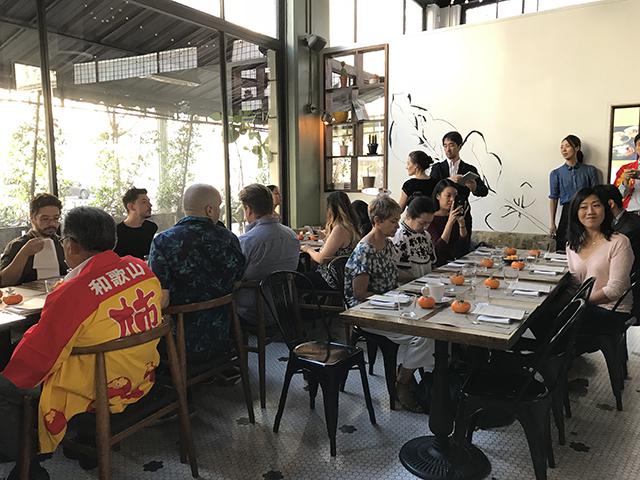
When we arrived, we were led to a rectangular table and were met by men in yellow and red “happi” coats with the Chinese character for "kaki," or persimmon in Japanese, written on their backs. We were going to be served non-astringent persimmons, they said, as opposed to the astringent persimmons which are common in the US. The only way I have ever used persimmons as part of a dish is with Japanese white radish, or daikon, marinated with mayonnaise. Not knowing what to expect, I was very curious as to what would be delivered to my plate.
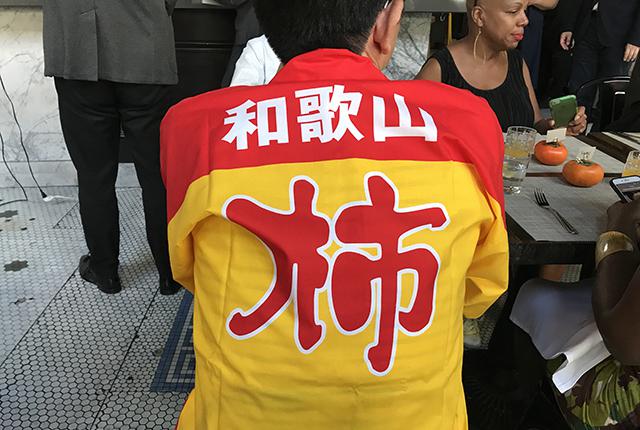
The first dish we were served was persimmon salad with grapes, red walnuts and sherry vinegar. It was naturally sweet and could almost pass for dessert if it weren’t for the vinegar.
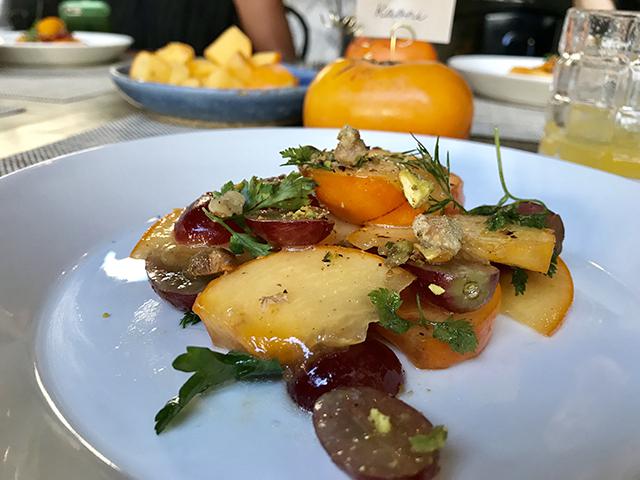
This was followed by persimmon satsuki rice porridge with sea urchin, abalone, and geoduck. It resembled an Italian risotto rather than a traditional Japanese porridge, or okayu. The combination of seafood and persimmons was so good, to my delight and surprise, that my new friends at the table decided to ask for another bowl. Unfortunately, they were rejected.

Ah, what can be said of the main dish? We were served duck resting on a nice soft pancake with roasted persimmons mixed into the dough. It was delicious.
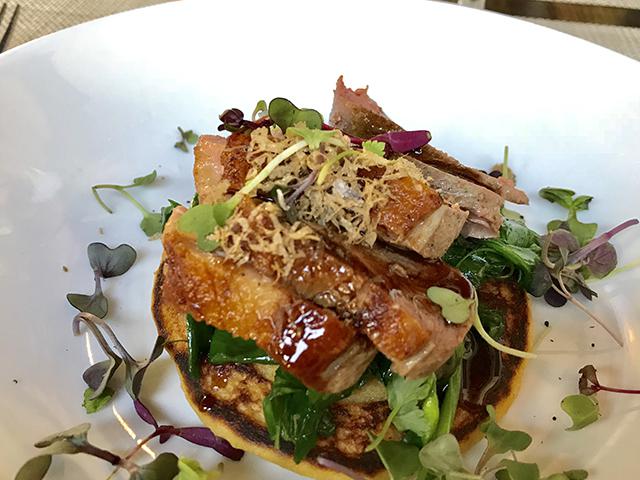
When we finished, Kenichi Kamei, the Senior Executive Director of Japan Agricultural Cooperatives Kihoku – Kawakami, a part of Wakayama, proudly explained to us that Wakayama persimmons have been presented to the Emperor and Empress for over 30 years. He also said enthusiastically that 12 tons of permissions from the prefecture will be shipped to California and Hawaii.
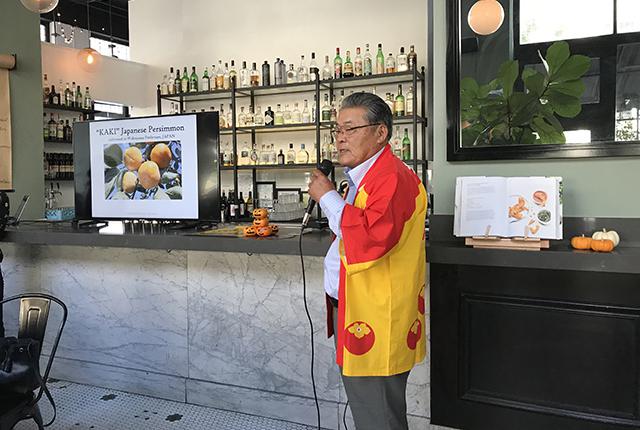
David Schlosser, the well-known chef of Japanese kappo-style restaurant “Shibumi” in LA, is excited at the opportunity to serve persimmons imported from Japan. “More restaurants should serve it," he said. “Not many Americans eat persimmons growing up, so chefs have to start teaching the consumers.”

With the Japanese market shrinking due to its declining population, car manufacturers, ramen restaurants, and other businesses are expanding overseas. Likewise, farmers need to look beyond the domestic market. Today, Japanese persimmons are on shelves in South East Asian countries like Hong Kong, Thailand, and Malaysia, and will soon be arriving in Australia as well. It may take a while for people to become familiar with the fruit, as many have never had it before. I wish the Japanese producers good luck.
Lastly, I'd like to offer a bit of advice. If you do happen to come across a persimmon, choose a ripe one with a large calyx. The less space there is between the fruit and the calyx, the better. In Japan, we eat with our eyes. We enjoy the appearance of food and the thoughts they evoke. So when you bite into a beautiful Japanese persimmon, remember to appreciate autumn.
